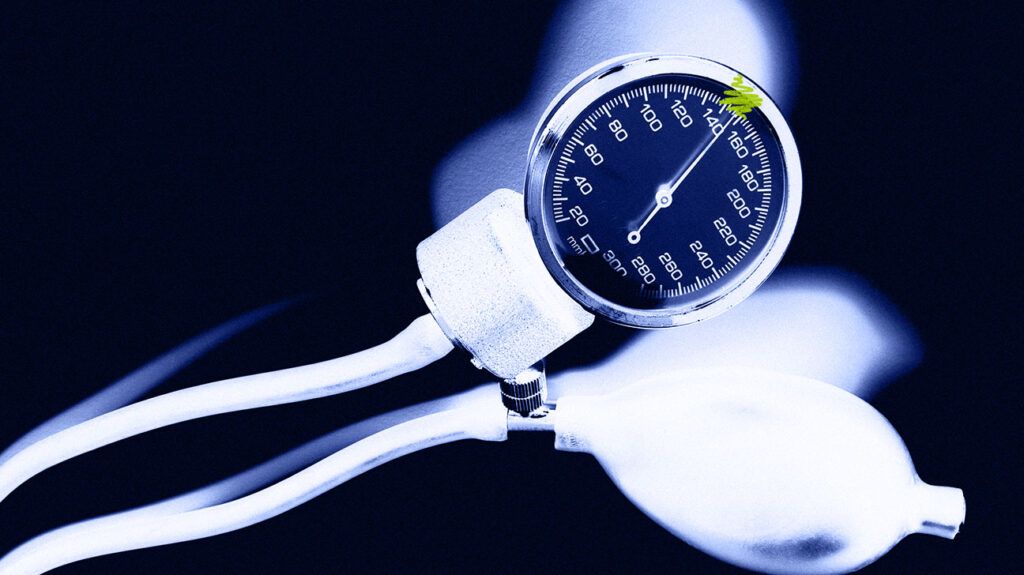
- Research from Australia has found that hypertension has been the leading risk factor for death in Australia for the past 30 years.
- Experts say the risk of death due to hypertension is likely to be similar in the United States .
- Hypertension, also known as high blood pressure, is referred to as the silent killer because many people are unaware they have it and do not always understand how serious the condition can be.
High blood pressure has been identified as the leading risk factor for death in Australia.
Experts say those findings are likely to be similar in the United States.
“This is consistent with what we already know in the United States. Hypertension, when inadequately treated, increases an individual’s risk for coronary artery disease, heart failure, kidney failure, stroke, peripheral artery disease, dementia, aortic aneurysms, and that’s just to start,” Dr. Parveen Garg, a cardiologist at Keck Medicine of USC in California who wasn’t involved in the research, told Medical News Today. “Considering the prevalence of hypertension, the under-recognition of this condition, the inadequate treatment of this condition, and health risks it poses, we can expect similar findings in the U.S.”
Researchers noted that Australia lags behind other higher-income countries in hypertension management.
They said dietary factors as well as use of tobacco were among the top risk factors.
Experts based in the United States say although the study looked only at the Australian experience, the data is helpful for clinicians around the world.
“As a global cardiovascular community, we are committed to improving health for everyone. To that end, more knowledge is power. Collaborative efforts to understand risk factors, interventions, and outcomes can certainly inform approaches both in the U.S. and globally,” Dr. Megan Kamath, a cardiologist at UCLA Health in California who wasn’t involved in the research, told Medical News Today.
“The latest data from the [Centers for Disease Control and Prevention] suggests that we have significant room for improvement in controlling hypertension,” she added. “Only about
In the United States, hypertension is considered a blood pressure reading at or above
Stage two hypertension is considered a reading at or above 140/90mmHg.
A normal blood pressure is less than 120/80 mmHg.
Nearly
Only 22% have their hypertension under control. Another 45% of U.S. adults with uncontrolled hypertension have a blood pressure reading of 140/90 mmHg or higher. That amounts to 37 million people.
Data from the Centers for Disease Control and Prevention suggests that in 2021, hypertension was a primary cause or contributing cause of nearly 700,000 deaths in the United States.
“The way I would kind of think about hypertension is we use the term ‘primordial risk factor’ and what we mean by that is that it’s a risk factor that can result in diseases that may have even a greater consequence, like coronary heart disease, or stroke,” Dr. Manoj Kesarwani, an interventional cardiologist at UC Davis Health in California who wasn’t involved in the research, told Medical News Today. “And so in that context, controlling hypertension will help prevent patients from having cardiovascular disease, which is the number one killer in the United States.”
The experts who spoke with Medical News Today say that controlling hypertension is a challenge not just on an individual level but at a population level too.
“On an individual level it can be difficult to control blood pressure due to poor lifestyle choices, limited education, and poor adherence or follow up with medical recommendations once a diagnosis has been made. On a population level, there are several more challenges, including access to care and social determinants of health playing into the difficulty of controlling blood pressure at this level,” Kamath said.
Adding to the challenge is the reality that most people are unaware they may be impacted by hypertension.
“Hypertension is not in the mind and consciousness of everyone, Kesarwani said. “For example, I had a patient that I took care of in the hospital [who had] suffered a stroke. He was only 38 years old and didn’t know that he had poorly controlled hypertension. And you think, well, was there an opportunity to intervene?”
Limiting alcohol intake, not smoking, maintaining a healthy weight, and being physically active can help prevent hypertension and help manage it.
However, experts say despite hypertension being a leading risk factor, people don’t always understand how serious it can be and how important management is.
“This disease is referred to as a ‘silent killer’ and, well, that really summarizes the problem, Garg said. “Hypertension is asymptomatic. Most people do not know they have it. And when they are informed they do not understand the need to fix it as they feel ‘fine.’ This condition is chronic and it often takes decades for overt disease to manifest. An emphasis on the health risks of hypertension to individuals when they are in earlier stages and a greater urgency to treat this with improved lifestyle measures and medications are vital.”
Data from the World Health Organization shows that nearly
“Hypertension is really a global phenomenon. We’re seeing it in Australia. We’re seeing it in the United States. We’re seeing it in countries like Mexico. You’re not able to escape hypertension, regardless of where you live,” Kesarwani said.
